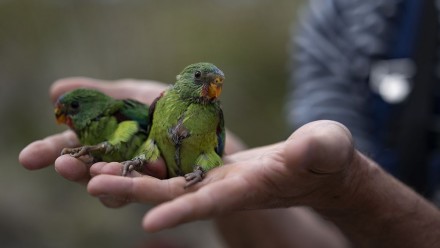The role of traditional floating rice systems
Governments across South-East Asia have programs to intensify rice production but researchers from the Australian National University (ANU), the Research Association for Development, Cooperative University (Myanmar) and An Giang University (Vietnam) are arguing for the conservation of the traditional, once-per-year crop of floating (or ‘deep-water’) rice in Myanmar. When wet-season floods inundate the plains the floating rice plants grow very fast, up to 4 metres high in the water column, and form good habitat for fish. When the floods recede the rice is harvested, leaving the land with a thick mulch of rice straw suitable for supporting vegetable production, such as black gram beans. This project is assessing the benefits and costs of conserving floating rice in Vietnam, where little remains, and extending the lessons to Cambodia and Myanmar—countries that have not yet undertaken widespread intensification of rice production.
Over the past two decades, governments in Vietnam, with support from international donors, have built extensive networks of dykes to control the annual floodwaters and enable production of two or three crops of rice per year. Now Vietnamese governments are setting targets for restoration of floating rice fields from the 200 hectares remaining. The research has found that although Myanmar has lost 42% of its floating rice fields, about 745,000 ha remains. As Myanmar opens to the world, the country has an opportunity to decide whether to intensify rice production or enhance the more diverse, traditional food-production system. The Government of Myanmar has a policy of tripling rice exports to 4 million tonnes per year by 2020. A workshop in 2016 with farmers, researchers and government officials agreed on three priorities to improve the benefits for farmers from floating rice production:
1. Improve understanding of the range of floating rice varieties to enable farmers to select the genetic qualities needed to better adapt to changing flood regimes.
2. Increase farmers’ knowledge on how they can better integrate dryland vegetable crops into their floating rice farming system.
3. Develop better markets based on the low farm chemical and more nutritious qualities of floating rice.
Key to conserving the red floating rice varieties as a low-volume but high-value crop is the development of markets. Floating rice has high protein, vitamin E and anthocyanin compared with high-yield white rice, but has a different texture and flavour. Identification of domestic and international markets for floating rice as a healthier choice is an objective for the next stage of this research.
The project is supported by the Mitsui & Co. Environment Fund and the Luc Hoffmann Institute for conservation research. Associate Professor Pittock has worked on several ACIAR projects.
More information: Associate Professor Jamie Pittock, jamie.pittock@anu.edu.au












